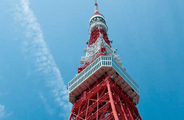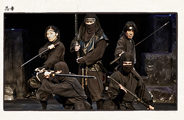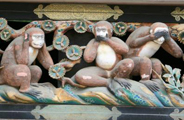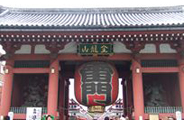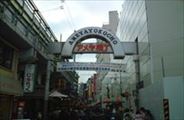Visiting Shinto shrines brings all sorts of rewards! (1/2)

The gods bestow all sorts of blessings, whether in romantic relationships, prosperity in business, or through power spots that increase your fortune. Amulets that you will feel comfortable about wearing also make perfect souvenirs for yourself, family, or friends. Here we present some shrines with their own personalities, that are somewhat of an alternative to the standard places in Tokyo.

Shinto shrines are sacred sites where one pays one's respects to the deity or the environment, and so the correct etiquette should be observed. We invite you to learn the fundamentals of how to a visit a shrine before making a visit to pay your respects.

Make a bow at the torii (gate) before walking into the grounds.

The chozuya (purification fountain) is where one purifies mind and body before worshipping. Start by holding the ladle in your right hand and washing your left hand. Then switch hands and do the same. Next, take the ladle in your right hand one more time and transfer some water into your cupped left hand and use this to rinse your mouth. Wash your left hand again. Hold the ladle vertically and pour some water over the handle before returning the ladle to its original position.

Next,one walks along the approach towards the hall of worship. The central area of the approach is used as a pathway by the deities, so please avoid walking in this area.Make a bow in front of the offertory box then place your offering of money inside.

After making two deeps bows, join both hands at chest level,slide your left hand forwards slight,and clap two times. Hold your hands together and pray. After you are finished, lower both your hands and bow deeply one more time.
While there are various formalities involved in how you make your visit,the important thing is your feelings at the time of prayer. It's best to visit a shrine in a spirit of sincerity while avoiding too much stiffness and formality.

Tokyo Daijingu is typically bustling with women making a visit in the desire to find a good match. Three deities that govern the workings of relationships are enshrined at Tokyo Daijingu,so the shrine is famous for answering prayers for romantic relationships. It is also the first shrine where a wedding ceremony was held in the presence of the deities. Word of mouth says that paying a visit to this popular shrine will ensure success in love.

Ema (votive tablets) decorated with flowers featuring different floral patterns each month. Votive tables are where visitors write their wishes or their words of thanks, and are offered to the deity.

After writing on the tablet, tie it in the designated place so that you wishes may be granted.

Amulets lined up at the amulet office. Buy an amulet based on what you are wishing for, whether success in love or driving safety.

From the left: rocket type, amulet made of mizuhiki strings, amulet for romantic relationships featuring a lily of the valley motif. All so charming that you'll want to tie them to your handbag.

This is a votive tablet written in English. Pull one out after paying with a coin.

Tokyo Daijingu
Address: 2-4-1, Fujimi, Chiyoda Ward, Tokyo
Access: 3 mins. walk from Iidabashi Station, JR Chuo Line or Sobu Line; 5mins. walk from Exit B2a,
Iidabashi Station, Tokyo Metro Yurakucho Line or Namboku Line, or from Exit A4,
Iidabashi Station, Tozai Line or Toei Oedo Line
Opening hours: 6:00-21:00
Staff hours: 8:00-19:00
Website:
Tokyo Daijingu

Akagi Shrine was reborn in a modern guise when it was rebuilt in 2010. The hall of worship, which is divided with glass walls, has a spacious, light ambience, which makes it a very welcoming space. The grounds have a café, a lovely spot to take rest after visiting the shrine. The Akagi Marche, which takes place once a month, is something to look out for.

An amulet based on the popular animation, GeGeGe no Kitarō..

A booklet used for collecting seal stamps from temples and shrines. The Japanese pattern on the cover is eye catching.

The main hall was built under the direction of architect Kengo Kuma, who is famous for his designs using natural materials. Visitors also come to this shrine especially to view this main hall.

The Akagi Marche is held once a month and is full of stalls selling handmade goods such as accessories and sweets.

Akagi Shrine
Address: 1-10 Akagi Motomachi, Shinjuku Ward, Tokyo
Access: 1 min. walk from Kaguarazaka Station,
Tokyo Metro Tozai Line; 8 mins.walk from Ushikome-kagurazaka Station,Toei Oedo Line
Opening hours: 24 hours
Staff hours: 9:00-17:00

Meiji Jingu is visited not only by Japanese, but also by many foreigners. A verdant green forest takes up most of the spacious grounds, which are blessed by nature surprisingly abundant for a site in the middle of the city. The shrine has recently become popular for being a power spot and attracts visitors from all age groups. Meiji Jingu is worth paying even closer attention to in 2020 when it celebrates its 100-year anniversary in the same year as the upcoming Tokyo Olympics.

The huge torii gate that is at the confluence of the northern approach and the southern approach is a massive structure, 12 meters in height.

Oracles are also available in English. Please hand the shrine maiden the numbered stick that comes out.

Meiji Jingu's oracles do not tell fortunes, but contain waka poetry instead.

The Kiyomasa well is said to be a power spot.Taking a photo of this site and keeping it on your mobile phone screen is said to improve your fortune.

Yoyogi Forest was created from 100,000 trees collected from all over the country. Even though this is a man-made forest, it is growing abundantly and provides a safe habitat for rare plants, insects, and wild birds.

Meiji Jingu
Address: 1-1 Yoyogi Kamizono-cho, Shibuya Ward, Tokyo
Access: 1 min. walk from Harajuku Exit, Harajuku Station,
JR Yamanote Line; 1min. walk from South Exit, Meiji Jingu-mae (Harajuku) Station,
Tokyo Metro Chiyoda Line & Fukutoshin Line; 8 mins. walk from Yoyogi Exit (North Exit), Yoyogi Station,
JR Yamanote Line; 5 mins. walk from Yoyogi Station,
Toei Oedo Line; 5 mins. walk from Kita Sando Station,
Tokyo Metro Fukutoshin Line; 5 mins.walk from Sangu-bashi Exit (West Exit),Sangu-bashi Station,
Odakyu Line
Opening hours: From dawn till dusk (hours change monthly)
Staff hours: 9:00-16:00
website: Meiji Jingu

Koami Shrine is always busy with worshippers from the neighborhood and others who have come from far away. The shrine is know for bringing good luck and warding off evil, and for luck with finances. The stock exchange located nearby, so many people dealing in stocks who are seeking good luck in economic affairs are also said to visit this shrine. Praying in the historic wooden hall built from Japanese cypress is sure to help one profit.

A statue of the goddess Benzaiten and a money-washing well are located to the side of the main building. Washing money in this well and then returning it to your wallet is said to improve your financial luck.

First,place the coins you would like to offer in the offertory box beside the Benzaiten statue.Don't forget to bow and clap too.

Place some coins in one of the strainers that have been provided,dip this in the well to purify your money,and then you're done!

The ascending dragon, which is worshipped for good luck and warding off evil, is a magnificent sculpture. Having managed to avoid fire damage during the war, it serves as a genuine symbol of good luck.

A variety of oracles and amulets can be found here.The cocoon ball oracles are said to be made from real cocoons.

Cocoons balls hung from trees in the shrine grounds by worshippers. Of course, these may also be taken home and displayed decoratively there.

Koami Shrine
Address: 16-23 Nipponbashi Koami-cho, Chuo Ward, Tokyo
Access: 4 mins. walk from Exit A2, Ningyocho Station,
Tokyo Metro Hibiya Line; 6 mins. walk from Exit 8, Suitengu-mae Station,
Hanzomon Line; 20 mins. walk from Exit 10, Kayaba-cho Station, Tozai Line
Opening hours: 24 hours
Staff hours: 9:00-18:00
website: Koami Shrine
Worshippers can gain benefits not only from visiting shrines, but also Buddhist temples. Here we introduce a rather unique Buddhist temple.

Since olden times, Tobifudoson has been believed to protect travellers. These days, the temple is visited by many people working in the airline industry or taking flights to travel overseas. How about visiting this temple in order to pray for safe air travel and secure travels?

The fudo-sama that flies through the sky is much loved for flying to one's travel destination and offering protection.

The air travel lucky charm, with it's unusual motif of an airplane, is so appealing that you might like to attach it to a travel bag or the like.

Amulets for golf, which wish the ball a good flight, are also available.
Ryukozan Shoboin
Address: 3-11-11 Ryusen, Daito Ward, Tokyo
Access: Approx. 10 mins. walk from Minowa Station,
Tokyo Metro Hibiya Line
Opening hours: 8:00-18:30
Staff hours: 8:00-18:30
website: Ryukozan Shoboin





















